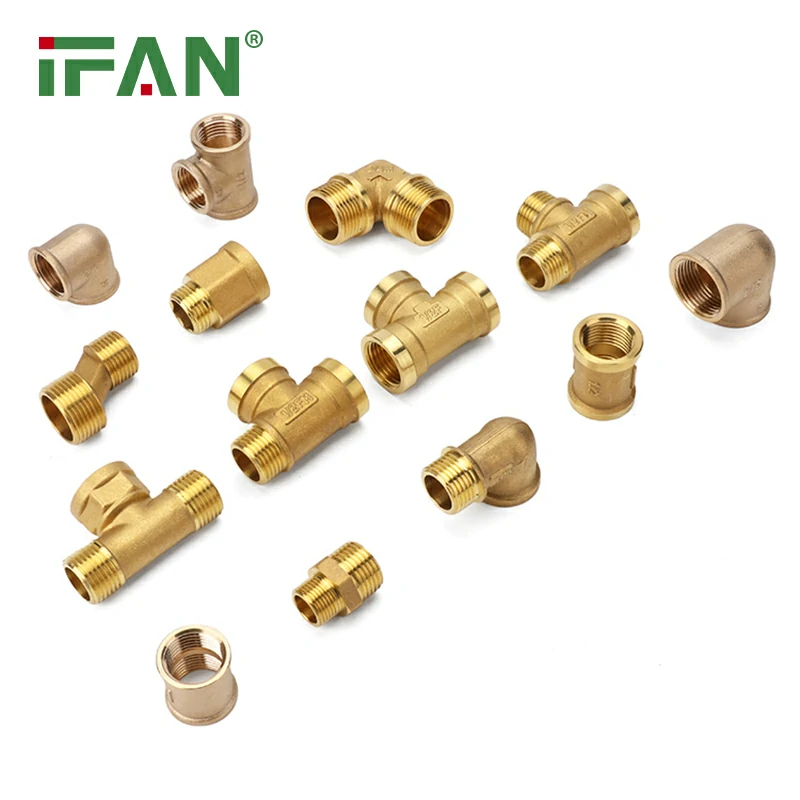In the plumbing industry, the quality and safety of fittings are paramount. Brass fittings, known for their durability and resistance to corrosion, are widely used in various applications, from residential plumbing to industrial systems. Recently, Navigator has made headlines by receiving WRAS (Water Regulations Advisory Scheme) approval for its thread brass fittings. This article explores the significance of this approval, the features of Navigator’s brass fittings, and what it means for consumers and the industry.

1. Understanding Brass Fittings
1.1. What are Brass Fittings?
Brass fittings are components made from an alloy of copper and zinc, designed to connect pipes, valves, and other plumbing fixtures. They are essential in plumbing systems due to their strength, resistance to corrosion, and ease of installation. Common types of brass fittings include elbows, tees, couplings, and adapters.
1.2. Importance of Quality Brass Fittings
Quality brass fittings are crucial for ensuring the safety and efficiency of plumbing systems. Poor-quality fittings can lead to leaks, reduced flow rates, and even catastrophic failures, which can cause significant damage to property and pose health risks.
2. What is WRAS Approval?
2.1. Overview of WRAS
The Water Regulations Advisory Scheme (WRAS) is a UK-based organization that ensures products used in plumbing systems comply with water regulations. WRAS approval indicates that a product has been tested and meets the necessary standards for safety and performance in water supply systems.
2.2. Significance of WRAS Approval
Receiving WRAS approval is a significant achievement for manufacturers, as it demonstrates their commitment to quality and compliance with industry standards. For consumers, WRAS-approved products offer peace of mind, knowing that the fittings they are using are safe and reliable.
3. Navigator’s Thread Brass Fittings
3.1. Features of Navigator’s Brass Fittings
Navigator’s thread brass fittings are designed with several key features that enhance their performance and reliability:
- High-Quality Materials: Made from premium-grade brass, these fittings are resistant to corrosion and wear, ensuring a long lifespan.
- Precision Engineering: Navigator employs advanced manufacturing techniques to ensure that each fitting is crafted with precision, providing a secure and leak-free connection.
- Wide Range of Products: The Navigator line includes various fittings, such as couplings, elbows, and tees, suitable for different plumbing applications.
3.2. Benefits of Navigator’s Brass Fittings
The benefits of using Navigator’s thread brass fittings include:
- Durability: Designed to withstand high pressure and temperature fluctuations, these fittings are ideal for both residential and commercial applications.
- Ease of Installation: The threaded design allows for quick and easy installation, reducing labor costs and time on the job site.
- Compatibility: Navigator’s fittings are compatible with various pipe materials, including copper and PEX, making them versatile for different plumbing systems.
4. Implications of WRAS Approval for Navigator
4.1. Increased Market Trust
With WRAS approval, Navigator’s brass fittings gain credibility in the market. This approval reassures consumers and contractors that the products meet rigorous safety and performance standards.
4.2. Competitive Advantage
In a crowded market, having WRAS approval sets Navigator apart from competitors. This distinction can lead to increased sales and market share, as consumers are more likely to choose products that have been certified for quality and safety.
4.3. Commitment to Quality
Receiving WRAS approval reflects Navigator’s commitment to producing high-quality products. This dedication to quality can enhance the company’s reputation and foster customer loyalty.
5. The Role of Brass Fittings in Plumbing Systems
5.1. Applications of Brass Fittings
Brass fittings are used in a wide range of applications, including:
- Residential Plumbing: Connecting water supply lines, fixtures, and appliances.
- Commercial Plumbing: Serving high-demand plumbing systems in restaurants, hotels, and office buildings.
- Industrial Applications: Used in manufacturing processes, HVAC systems, and chemical handling.
5.2. Advantages of Using Brass Fittings
The advantages of using brass fittings in plumbing systems include:
- Corrosion Resistance: Brass does not rust, ensuring a longer lifespan for plumbing systems.
- Strength and Durability: Brass fittings can withstand high pressures and temperature fluctuations, making them suitable for various applications.
- Aesthetic Appeal: The natural golden color of brass adds a touch of elegance to plumbing installations.
6. Choosing Quality Brass Fittings
6.1. Factors to Consider
When selecting brass fittings, consumers should consider the following factors:
- Certification: Look for fittings that have received certifications, such as WRAS approval, indicating compliance with industry standards.
- Reputation of the Manufacturer: Choose reputable brands known for their quality and reliability in the plumbing industry.





